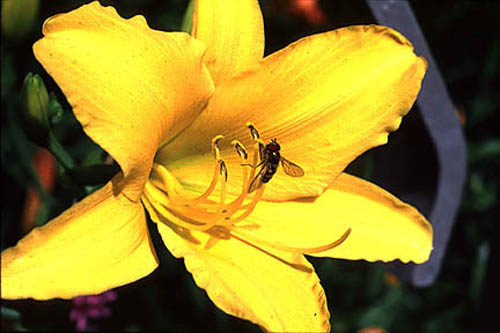The cry came from a woman at the Canada Pavilion at Expo 86 in Vancouver.
We were at a railing overlooking the water. There were certainly more interesting things to observe than a wandering bee. Hardly the place for a bee, anyway.
The crowd reacted dramatically, rushing away from the woman.
My reaction, however, was vocal. I do not remember the exact words but the gist was “Leave it alone. What’s it done to you?”
People moved away from me as well then. Obviously the woman and I were both crazy about bees – but for differing reasons.
I did not see the bee, and I don’t think many others did, either…
• • • • •
From the time I can remember I had found it disturbing that some find it necessary to destroy other creatures just for being there. Perhaps it came from the environment at home. We all liked and cared for animals, irrespective of what form or size they happened to be. And so it was, I suppose, with that straying bee in an unusual place.
• • • • •
I do not know if bees were endangered in 1986. But endangered or not, why destroy them? Bees are pretty important in our lives. They are responsible for pollination, the process that produces food for us humans. But how many know that? Or care?
We have domesticated the western honey bee (Apis mellifera) to produce honey and pollinate crops. The same has been done in southern Asia with the eastern honey bee (Apis cerana).
Today bees are in danger of extermination due to different causes. They include infection by parasites, loss of habitat, and the use of cell phones. Yes, cell phones, the signals of which disorientate bees, preventing them from behaving naturally.
Bees produce honey for our consumption, and wax for such creations as candles, soap, lip balm and cosmetics. To a great extent our existence on this earth is dependent on theirs.
Don’t kill them just because they happen to be bees.
• • • • •
The town of Falher in Alberta claims to be the “Honey Capital of Canada.” With good reason. At one time more than two million kilograms of honey were produced annually from over 35,000 beehives in the region.

